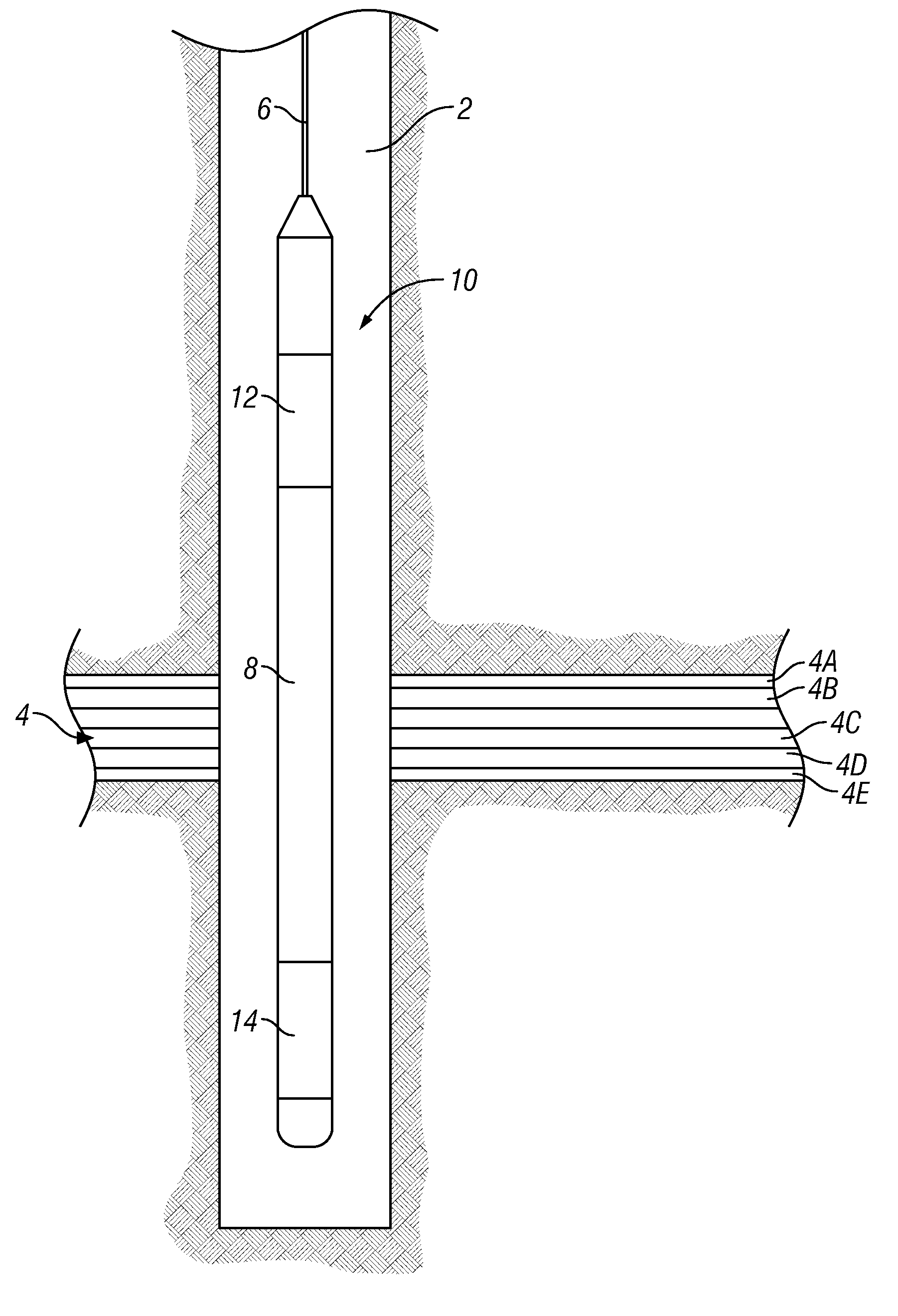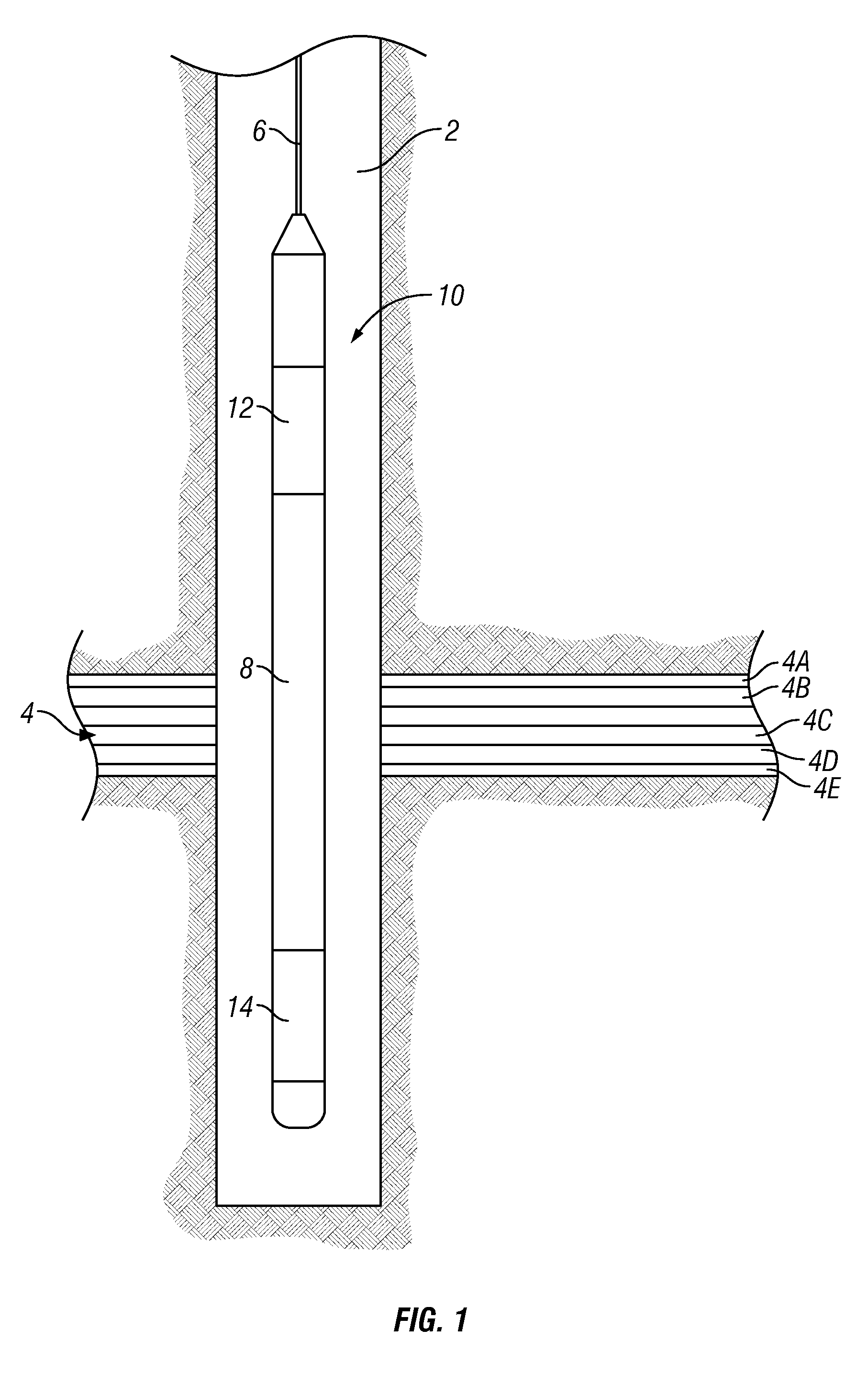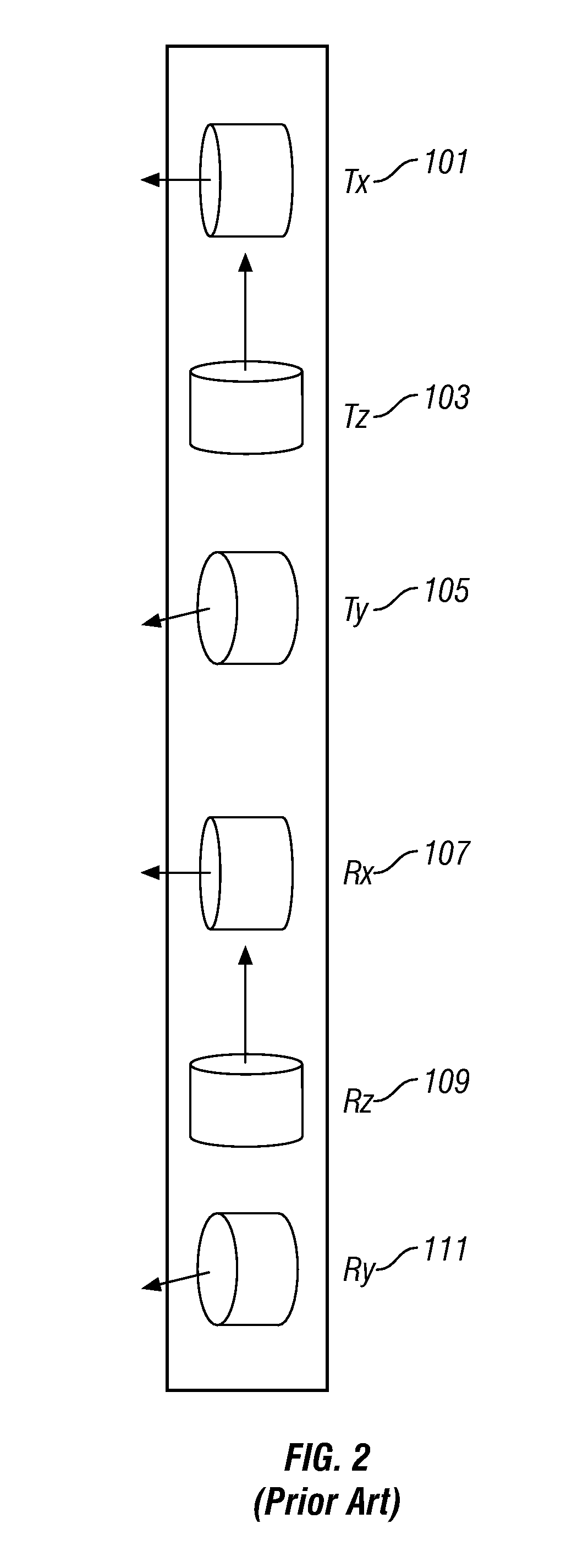Use of multi-component measurements in delineating geology of deep-water sediments
a geology and multi-component technology, applied in the direction of seismology, instrumentation, and seismology for waterlogging, can solve the problems of poor data quality, difficult to evaluate the importance of thin mudstone beds within a sand layer away from the borehole, and inability to “see” into the formation
- Summary
- Abstract
- Description
- Claims
- Application Information
AI Technical Summary
Benefits of technology
Problems solved by technology
Method used
Image
Examples
Embodiment Construction
[0026]Referring now to FIG. 1, an electromagnetic induction well logging instrument 10 is shown disposed in a wellbore 2 drilled through earth formations. The earth formations are shown generally at 4. The instrument 10 can be lowered into and withdrawn from the wellbore 2 by use of an armored electrical cable 6 or similar conveyance known in the art. The instrument 10 can be assembled from three subsections: an auxiliary electronics unit 14 disposed at one end of the instrument 10; a coil mandrel unit 8 attached to the auxiliary electronics unit 14; and a receiver / signal processing / telemetry electronics unit 12 attached to the other end of the coil mandrel unit 8, this unit 12 typically being attached to the cable 6.
[0027]The coil mandrel unit 8 includes induction transmitter and receiver coils, as will be further explained, for inducing electromagnetic fields in the earth formations 4 and for receiving voltage signals induced by eddy currents flowing in the earth formations 4 as a...
PUM
 Login to View More
Login to View More Abstract
Description
Claims
Application Information
 Login to View More
Login to View More - R&D
- Intellectual Property
- Life Sciences
- Materials
- Tech Scout
- Unparalleled Data Quality
- Higher Quality Content
- 60% Fewer Hallucinations
Browse by: Latest US Patents, China's latest patents, Technical Efficacy Thesaurus, Application Domain, Technology Topic, Popular Technical Reports.
© 2025 PatSnap. All rights reserved.Legal|Privacy policy|Modern Slavery Act Transparency Statement|Sitemap|About US| Contact US: help@patsnap.com



